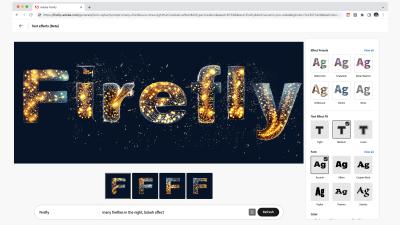Adobe Stock offers a vast library of vector graphics that can enhance your creative projects. However, understanding how to use these resources legally is crucial to avoid copyright issues. This guide explores the importance of licensing and best practices to ensure compliance when using Adobe Stock vectors.
Understanding Adobe Stock Vectors

Adobe Stock vectors are scalable graphics created using lines, shapes, and points. These graphics are resolution-independent, meaning they can be resized without losing quality, making them ideal for various applications, including websites, print media, and advertising materials. Adobe Stock offers both free and paid vectors, each governed by different licensing agreements.
When purchasing or downloading vectors, it’s essential to be aware of the type of license you receive. The standard license allows for commercial use, while an extended license provides broader usage rights. Always read the licensing terms carefully to ensure that your intended use falls within the permitted scope.
Licensing agreements typically outline limitations, such as the number of reproductions, the geography of use, and whether the vectors can be used for resale. Understanding these details helps you avoid legal repercussions and supports the creators of the designs.
Importance of Licensing in Vector Use

Licensing is a critical aspect when using any stock vector because it defines how you can legally utilize a design. Violating these licensing terms can lead to legal action, including fines or lawsuits. Therefore, it’s essential to ensure that you respect the restrictions associated with each vector.
The significance of licensing extends beyond legal compliance; it also fosters a respectful and sustainable creative ecosystem. By adhering to licensing agreements, you’re supporting designers and artists who contribute their work to stock platforms. This support encourages them to continue creating high-quality content.
In summary, understanding and respecting licensing is fundamental when using Adobe Stock vectors. Always ensure you are using graphics within the scope of their licenses to maintain a legal and ethical approach to your projects.
How to Properly Credit Adobe Stock Creators
When you use Adobe Stock vectors, giving credit to the creators is not only a legal requirement in some cases, but it’s also a great way to show appreciation for their hard work. Here’s how you can do that properly:
- Check Licensing Agreements: Always review the specific licensing terms associated with the vector you are using. While some licenses may not require attribution, it’s good practice to credit the creator whenever possible.
- Use the Correct Format: If you are required to credit a creator, format it in a clear and professional manner. A common format includes the creator’s name and a link to their Adobe Stock profile. For example: “Illustration by [Creator’s Name] from Adobe Stock.” Include a hyperlink to the vector or their profile if used online.
- Placement Matters: Where you place the credit is essential. For print designs, a footer or a small credit line can work well. For digital content, consideration should be given to placing the credit near the vector or in a credits section of your website.
- Use a Consistent Style: Maintain a consistent style across all credits in your project, whether it’s using a specific font, color, or format. This adherence to style helps maintain professionalism in your work.
By giving proper credit, you not only comply with licensing requirements but also contribute to a culture of respect within the design community. Remember, every vector you use has a creator behind it, and acknowledging their contributions can only enhance your creative work!
Limits on Usage of Adobe Stock Vectors
Understanding the limits on using Adobe Stock vectors is crucial for any designer or creator. While Adobe Stock offers a variety of vectors for your projects, each comes with its own set of limitations. Here’s what to keep in mind:
- Standard License: The standard license allows for a wide range of uses including websites, social media, and print materials. However, there are restrictions on using the images for merchandise or resale without purchasing an extended license.
- Extended License: If you plan to use the vectors in products for sale, like t-shirts or posters, an extended license may be necessary. This grants you more rights, allowing for broader commercial use.
- Modification Limits: While you can modify vectors to suit your projects, it’s essential not to misrepresent the original work. Certain modifications may also limit your right to claim credit for the finished design.
- Distribution Restrictions: Adobe Stock vectors cannot be distributed as stand-alone files or shared with anyone outside your team unless you have the appropriate license. This includes distribution online or through direct downloads.
Being aware of these limits not only protects you legally but also ensures that creators are compensated fairly for their work. Always refer back to Adobe’s licensing page for the most up-to-date information and guidelines on any vectors you plan to use!
Best Practices for Editing Adobe Stock Vectors
Editing Adobe Stock Vectors can be a game-changer for your design projects, allowing you to customize graphics to truly fit your needs. However, it’s crucial to follow some best practices to ensure that you’re using these resources effectively and legally.
Here are some tips to keep in mind:
- Understand the License: Always check the specific license associated with the vector file. Some may allow modifications, while others might have restrictions on how the artwork can be altered.
- Use Appropriate Software: Utilize vector editing software such as Adobe Illustrator or CorelDRAW for the best results. These programs retain the integrity of the vector format, allowing for smooth editing.
- Maintain Quality: When editing, ensure that you don’t lose quality. This means avoiding excessive scaling or resizing that could lead to pixelation, especially if the vector has been rasterized.
- Don’t Remove Attribution: If the vector requires attribution, be sure to keep any necessary credits even after editing, as per the licensing terms.
- Save Versions: Keep original files intact and always save your edits as new versions. This way, you can revert back if needed and maintain a clean workflow.
By following these best practices, you can make the most out of your Adobe Stock Vectors while respecting copyright laws and ensuring a high-quality finish in your projects.
Using Adobe Stock Vectors for Commercial Projects
Using Adobe Stock Vectors for commercial projects can significantly enhance your designs while providing cost-effective visual solutions. However, it’s important to navigate this terrain carefully to ensure that you’re using the vectors legally and ethically.
Here are some essential points to consider:
- Check Licensing: Different licenses come with different permissions. Ensure you understand what the standard and extended licenses offer. For commercial use, you’ll often need an extended license to avoid legal complications.
- Consider Modifications: If you modify a vector graphic, ensure that your changes are significant enough to create a new and distinct work. This can help protect you against copyright issues.
- Create Original Content: While Adobe Stock Vectors can be the backbone of your design, try to incorporate original elements to make your project stand out. This could be adding unique text, graphics, or layers.
- Keep a Record: Maintain a record of your downloads and licenses. This documentation is invaluable if you ever need to prove the legitimacy of your usage.
- Stay Updated: Licensing requirements can change. Regularly check Adobe’s website for any updates to their licensing agreements to ensure compliance.
By adhering to these guidelines, you can safely and effectively use Adobe Stock Vectors to enhance your commercial projects while minimizing risk. Happy designing!
Frequently Asked Questions about Adobe Stock Vectors
Using Adobe Stock Vectors can be a fantastic way to enhance your design projects, but it also brings up a few common questions. Here are some of the most frequently asked questions to help clarify your understanding of legal usage:
- What is a vector file?
Vector files are graphics that are made up of paths, rather than pixels. This means they can be scaled to any size without losing quality, making them perfect for logos, illustrations, and more. - Can I use Adobe Stock Vectors for commercial projects?
Yes, you can! Just make sure you adhere to Adobe’s licensing agreements. A standard license typically allows for use in commercial projects, but always double-check for any restrictions. - Is attribution required when using Adobe Stock Vectors?
Attribution is not necessary if you hold the proper license for the vector. However, if you’re unsure or if the license stipulates it, always check the specific requirements. - Can I modify Adobe Stock Vectors?
Of course! Adobe Stock Licenses generally allow modifications to vectors, enabling you to tailor them to fit your project perfectly. Just be mindful of how you incorporate them into your own designs. - What happens if I don’t adhere to the licensing terms?
Not following Adobe’s licensing terms can lead to legal consequences. It’s always best to familiarize yourself with the license details to avoid potential issues.
These FAQs are just a starting point. If you have any other questions, Adobe’s official help pages can provide additional guidance!
Resources for Learning More about Adobe Stock Usage
If you’re eager to dive deeper into the world of Adobe Stock and learn more about using vectors legally and effectively, there’s a wealth of resources available at your fingertips. Here are some excellent places to start:
- Adobe Help Center: This is your go-to resource for official information about licensing, usage rights, and best practices. Explore their extensive documentation for the most up-to-date information.
- Online Tutorials: Websites like Adobe’s Blog and YouTube channel offer a plethora of tutorials to guide you through the ins and outs of using vectors.
- Design Communities: Platforms like Behance, Dribbble, or even Reddit’s design subreddits can provide real-world insights and practical advice from fellow designers who use Adobe Stock vectors.
- Licensing Guides: Many design blogs and forums publish comprehensive guides on Adobe Stock licensing. Doing a quick search can yield a variety of opinions and solutions.
- Webinars and Workshops: Check out Adobe’s scheduled live webinars or workshops, which often cover creative licensing and best practices for using stock content.
With these valuable resources, you’ll be well-equipped to navigate Adobe Stock’s offerings confidently and legally!


